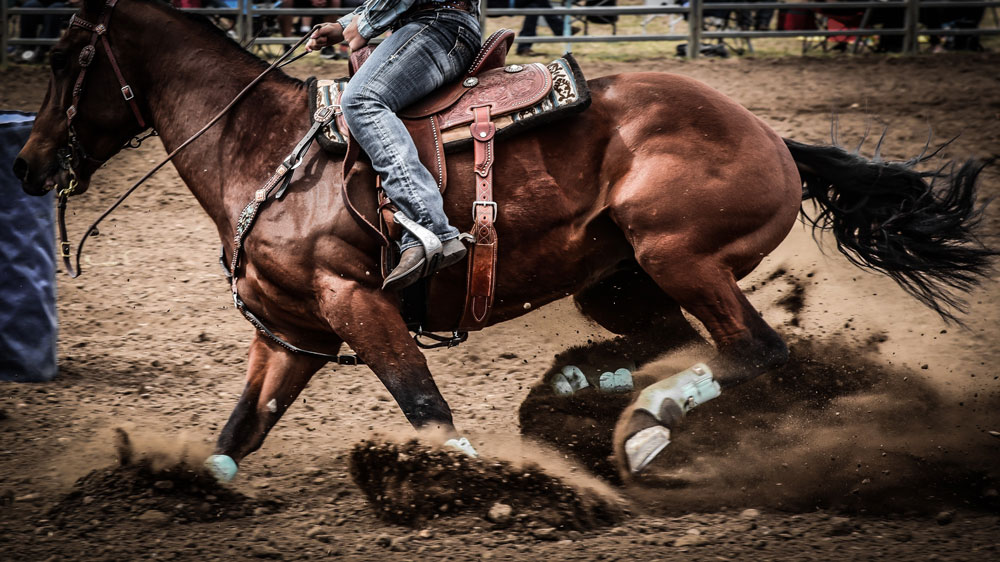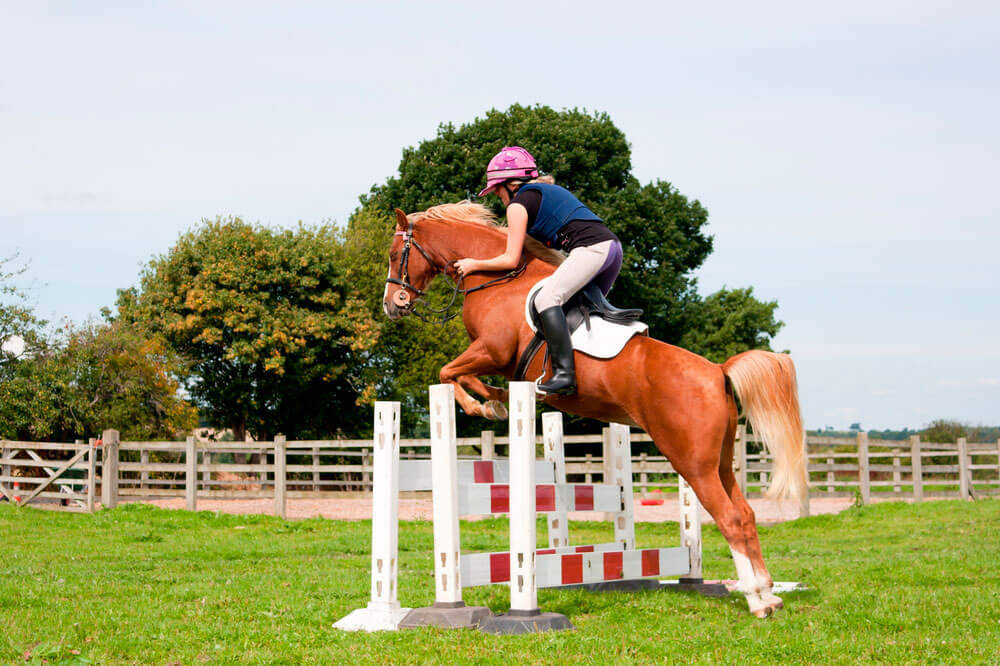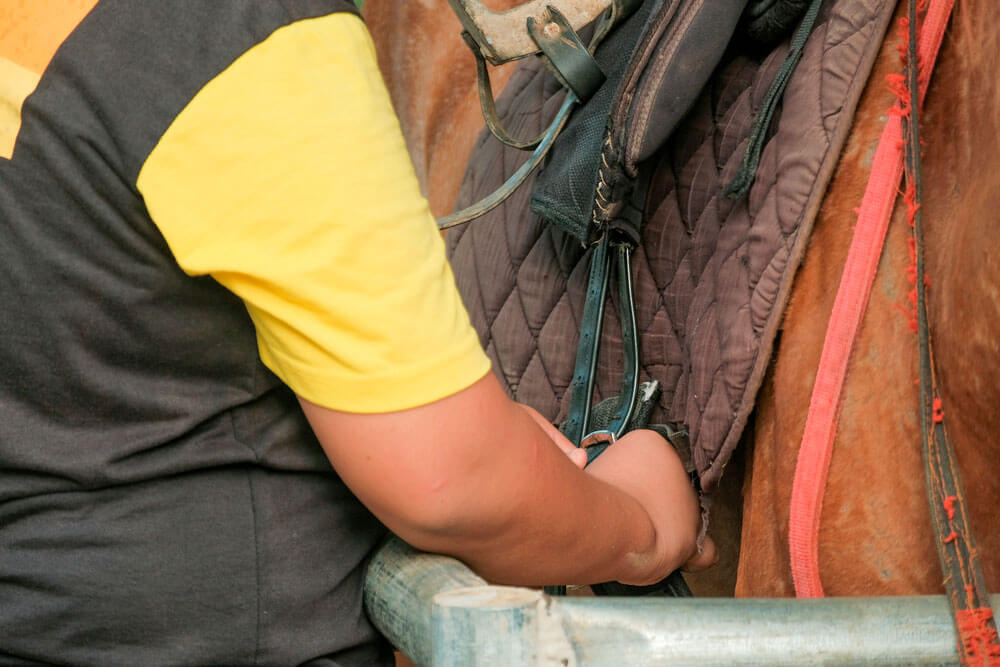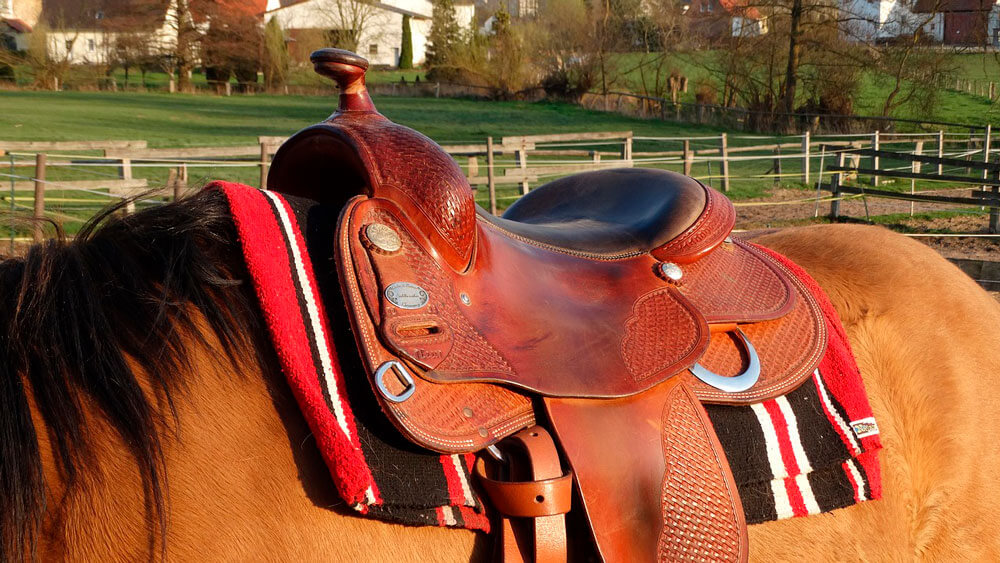This article describes the entire process of saddling a horse as it could be not so easy as it seems at first glance. Saddling is claimed as an essential part of tacking up a horse whether you’re a beginner or a professional. If it’s done properly, the horseback riding, both Western and English, could be more pleasant and safe. So let’s have a look at the nitty-gritty of horseback saddling.
Western Riding

This style of riding is developing through the centuries bringing new ideas as well as keeping the old ones. Previously, horse riding was commonly used as a means of chasing the cows on ranches. Now, the Western style of horse riding is spread all over the world and takes place in lots of competitions. Western riding is particularly popular in trail and leisure riding as well as horse shows. That would be a great choice for beginners.
Key Features
- The major aspect of the Western style is a horse saddle that differs from the English one immensely. It’s called a deep-seated saddle with a high pommel (swell) and a horn at the front, and a cantle at the back. The fenders that are attached to the stirrups are quite wide and large. It’s designed to keep the rider tight in the saddle during the long-hour rides as well as protect from sudden moves of the horse.
- Western saddle pads typically have a rectangular design but nowadays the variety of shapes and colors is much bigger. There are also leather patches covering the withers to provide more comfort and avoid friction.
English Riding

English style derives from military usage and then the horse riding was extremely in demand among wealthy celebrities and royalty. But currently, it’s widely popular in hunting, hacking, and all kinds of competitions. If you’re an avid rider who is fond of taking part in eventing, you will definitely like this style.
Key Features
- There are two types of horse saddles related to English riding – all-purpose (forward seat) saddle and dressage saddle. Unlike the Western deep style, they are claimed as flat saddles. Sech gear is more lightweight and is usually designed according to the riding style you need (e.g. jump or ride dressage). The Western saddle features a non-horn design that provides closer contact with a horse and free movement.
- The saddle pads are typically contoured for hunt-seat saddles or light square for dressage saddles.
How to Saddle a Horse – Step by Step Guide
The process of saddling a horse for Western and English riders is a bit different due to their specific designs so here we prepared two detailed guides on how to saddle a horse properly.
Before you start, the horse should be tied by the halter to a post for the rider’s safety and comfort. The horse should be groomed carefully; pay attention to the dirt not being stuck. Before you tack up the gear, remove all burrs and thorns from the equipment if there are some.
How to Tack Up a Western Saddle
- First of all, you should use the saddle pad. It should be tacked at the base of the horse’s neck, just a couple of inches in front of the withers.
- If you need to move the pad forward or backward, it’s better to lift it and place it on the back. That’s because sliding the pad could get the horse uncomfortable while you ride. Mind the position of the saddle pad, it should cover both sides of the horse equally.
- Now goes the saddle. The Western saddle is designed with the cinch attached to the right side. It’s better to flip the cinch and the stirrup over the horn so it won’t disturb you while you’re putting the saddle on.
- Take the saddle, lift it over the horse’s back and start to tack it up smoothly. The horse equestrian saddle should be placed a few inches below the withers so the pad shows up a bit in the front and in the back of the saddle. If everything is set, you will see that the cinch is placed merely before the elbows.
- Take the cinch and the stirrup from the horn. The cinch (girth) is an essential part of the gear as it helps keep the saddle tight on the horse avoiding wobbling. Tight the cinch on the horse. It’s better to do it from the left side of the horse.
- Set the cinch so it fits well, the saddle shouldn’t slide but there must be a little space left between the cinch underneath and the body. To adjust the tightness, use the strap between the D-ring and cinch ring.
- You can walk your horse a bit before mounting so you could double-check if anything is set duly.

How to Tack Up an English Saddle
Most of the steps are quite similar to the Western style saddling but there are some aspects that should be taken into account according to the English saddle design.
- First of all, you should use the saddle pad. It should be tacked at the base of the horse’s neck, just a couple of inches in front of the withers.
- If you need to move the pad forward or backward, it’s better to lift it and place it on the back. That’s because sliding the pad could get the horse uncomfortable while you ride. Mind the position of the saddle pad, it should cover both sides of the horse equally.
- Lift up and loop over the stirrups (irons) attached to the stirrup leathers so they don’t bother you while tacking the horse.
- It’s time to set a saddle. Lift it over the horse’s back and start to tack it up smoothly. It should be placed a few inches below the withers so the pad shows up a few inches in the front and in the back of the saddle. If you’ve done right, you will see that the girth is placed merely before the elbows.
- Put the girth straps (billets) through the loop on the pad from the both sides. The girth typically has a three-billet design but two billets are also ok as the third one is an extra just in case. Tighten the girth from one side of the saddle by using girth straps attached to the saddle. Then repeat the step with the other side of the saddle. Follow the instructions of the girth’s manufacturer to tighten them properly.
- Set the girth so it fits well, the saddle shouldn’t slide but there must be a little space left between the girth underneath and the body. You can check it by placing your fingers under the girth. If it feels quite snugly and tight – you did it!
- The stirrups should be adjusted as well. You can change the length with the help of the buckle placed on the stirrup leather. When it’s done place the buckle under the skirt of the saddle so it won’t disturb you during the ride.
- You can walk your horse a bit before mounting so you could double-check if anything is set duly.

Final Thoughts
In fact, the horse saddling process is an integral part of equestrian sports that have its own features and subtleties. It could be demanding and complicated for the first time, that’s why tacking skills require some time to be enhanced. But you can’t neglect the process as it affects both the horseman and his horse. Choosing high-quality comfy gear could improve your riding and protect from falling off the saddle. That’s why following the horse saddling instructions is a must. In addition, properly set equipment bring comfort for the companion too so it could handle the ride way longer and more efficiently.
You should also keep in mind considering the best tacking gear for the rider that will highly result in further equestrian achievements. Choose the style that you prefer most and take into account the horse riding activity you want to take part in. If you’re not completely sure what to start from, ask your riding instructor or another expert on which tacking gear you should pick.
